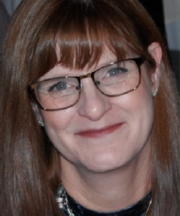 I hate to see the last leaves fall. The recent winds have stripped most of the straggling colors from the hillsides, and though winter has yet to officially arrive, autumn is certainly finished. Evenings are dark now and sullen, far from the long, warm, daylit evenings of summer.
I hate to see the last leaves fall. The recent winds have stripped most of the straggling colors from the hillsides, and though winter has yet to officially arrive, autumn is certainly finished. Evenings are dark now and sullen, far from the long, warm, daylit evenings of summer.
As a city girl, I never knew true darkness until I moved to rural West Virginia. In the fall, when I transferred to GSC, I moved onto a one-lane road where the nearest neighbors were summer residents. It just so happened that they turned off the electricity to their house for the season the same weekend as the time change. Their dusk to dawn light no longer had power. The next evening, I stepped out my front door into blackness. With the cloud cover, no moon or starlight cast even a shadow. I was completely unnerved by this night blindness and got my own dusk to dawn light the very next day.
I now have lived here long enough to know that the best feature of the winter months is the night sky. Never, before moving here, had I seen so many stars. Never before could I look up and clearly distinguish The Milky Way crossing the sky. It is no wonder that stargazers from all over the northeast gather regularly at Calhoun County Park. This areaâs lack of âlight pollutionâ gives our night sky a crisp, sharp, depth that simply isnât available in a metropolitan environment.
November is the month of the Leonid meteor shower, which usually peaks around November 17 or 18 when you can see up to 15 meteors an hour. The Leonids occur when the Earth passes through the debris left by Comet Tempel-Tuttle, which takes about 33 years to make one orbit around the Sun. The shower is called Leonids because its radiant, (the point in the sky where the meteors seem to emerge from), lies in the constellation Leo. Look low in the Eastern sky.
The Leonids are one of nine annual meteor showers. The others are the Quadrantids in January, the Lyrids in April, the Eta Aquarids in May, the Perseids in August, the Draconids and Orionids in October, and the Geminids and Ursids in December. Not all these meteor showers cross our Appalachian skies, but I always keep my eye on the eastern night sky in November. I enjoy the Leonid shower because when peaking, it is a reliable source of âfalling stars,â and it picks up around my birthday. I have spent many a mid-November wishing over candles and upon falling stars.
I think itâs good, sometimes, to wish on stars. I also think itâs good sometimes to look up and remember that on a planetary scale, weâre specks on one of the rocks floating around one of many suns. Human beings have such an inflated sense of importance, but a crisp, clear view of a peaking meteor shower can make you feel humble.
This year seems to be the year of never-ending stories, with Covid, the election, and the ongoing hurricane season. Never before have I so desperately wanted to curl up and hibernate until spring. But the vast night skies so crisp above remind me, the best feature of the upcoming season is light, shining in the darkness. I try to remember this when itâs dark. I remind myself to look up at the lights.
You can subscribe to Lisaâs seasonal email newsletter at tinyurl.com/two-2020 or gain membership-only access to all her writing and creative projects at patreon.com/lhayesminney |



